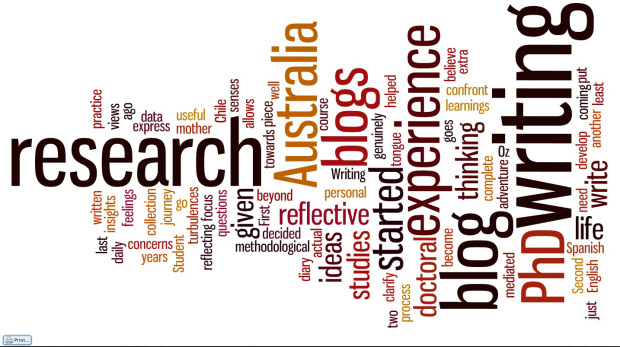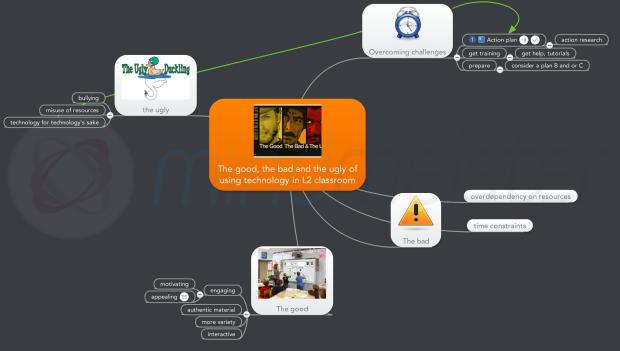How to flip the language classroom using web-based polls
Presentation at the Showcase of innovative use of technologies in education
As a language teacher I have spent most of my professional life looking for ways to engage students with their learning. Over time I have used a wide array of tools ranging from traditional textbooks to all sorts of multimedia and web based tools. My concern has not only been to engage students with language items, but to provoke them and ultimately engage them in reflection and critical inquiry. With so much media and web-based tools out there, what else can I use to engage my students and contribute to their learning? Lately, I have discovered that simple and straightforward tools can work very well. One of these is web-based polls and surveys. I have used polldaddy to create polls and surveys and use them with my Spanish language students and prospective TESOL teachers.
What is a poll?
A poll allows you to ask one multiple choice question. Participants can choose from among answers that you predefine. You can allow the voter to select just one answer or allow them to choose multiple answers.
What is a survey?
A survey allows you to ask multiple questions across a wider range of question types. So you can ask for a comment, an email address, a name, an address etc., as well as multiple choice questions. Click here and answer this short survey.
How can you use polls and surveys for the L2 classroom?
Examples: 1. To provoke discussion and reflection before and during the class: La actualidad en los medios de comunicación SLA Discussion on stereotypes Mira el video y contesta
2. To continue the discussion Popular beliefs about language learning Título para nuestra revista SLA
3. To collect students’ opinions/feedback All responses are anonymous so you can use this to get some honest feedback on your teaching if you are doing action research. Uso de blogs en la clase de español
Conclusion Polldaddy can be a great tool to use with students. It allows teachers and students to engage in dialogues. Polls can promote students’ engagement and reflection. The discussion can take place before the class, during the session and after the session.
- You can create opinion polls based on videos from YouTube.
- You can use it to get some feedback on your blog.
- Students who write blogs can use it to get quick responses from readers.
- You could even use it as a comprehension check for online text audio or video activities that you create for your students.
- You can get students to create their own research polls for their peers and then discuss the results in class.
Limitations The use of polls can promote a limited or superficial level of engagement and reflection if they are used without any sound educational design. They can perpetuate the ‘like’ culture. For transformative learning, you need much more than just polls. However, they can be the start of a dialogue.
And I keep on blogging!
I created this blog some months ago as part of one unit I was teaching with a focus on technology in the L2 curriculum. I blogged every week with a summary of the week’s topic and a challenge for my students. That unit is over, but I keep on blogging!
I decided to continue this blog as one way to keep on reflecting in my teaching and explore some potential pedagogical innovations considering their affordances and constraints in specific contexts. I have been teaching, mainly languages (English and Spanish) for a long time (longer than what I would like to admit sometimes). The range of students I have had vary from little children to mature students, in EFL and ESL contexts, at formal settings: schools, universities and at informal ones, too. Not only my experience validates my knowledge, but also my formal studies in English, Spanish, language teaching, applied linguistics, learning theories and education. However, I can’t just rely on the things I had done before to face new teaching opportunities.A new unit and new students always bring different challenges. One thing that I have confirmed very vividly this semester is that as a teacher, not only you need to know the subject matter and how to deliver that content, but as importantly, you need to know your students and their motivations. Isn’t this obvious? So how can we, teachers, get to know our students better?
Does knowing which technologies our students use for their learning help us to know our students better?
Probably yes, or better said.. there is a a potential! For example, if I consider my students’ use of technologies for learning Spanish, I can say that they use different dictionaries on line, google translator, forums, youtube, conjugation websites, blogs, scribble, flashcards, grammar quizzes and moodle. My observations confirm that students tend to rely on the use of online dictionaries more than any other tool. This might reveal that students prefer using online tools that provide them with straightforward responses to their language requirements, especially in relation to vocabulary acquisition. Regarding tools such as blogs and moodle, they are mostly used as it is required in the class, but not much used after the her is over. Every time I have asked students if they have enjoyed blogging and if they would continue with their blogs, most say that they they see the benefit for their language improvement. However, they don’t think they will continue blogging. I guess, in the end, for most of them it was just another assignment. http://tallerescritura2014espanol.wordpress.com
What did I learn about my students knowing about their technologies for learning?
I guess the most obvious thing is that my idea of the tools that could contribute my students’ learning is different from my students. For example, I do believe strongly that their writing can improve highly with systematic writing tasks. This can be achieved by means of the blogs, however, students would only use them as it is required, but not beyond the class requirements and not initiated by themselves. No doubt that online dictionaries are very useful and powerful tools, but will not necessarily contribute to students’ acquisition of vocabulary in the longer term. My observations suggest that students tend to over rely on online dictionaries and google translator undermining their confidence to write anything without the use of a dictionary.Probably I need to study their use of online dictionaries a bit further, and find ways to help them break the dependence on online dictionaries.
Something else I have learnt from my students is that they are becoming more autonomous and independent learners. This is inline with the study of Steel and Levy (2011) which supports the argument of more autonomous learners as a result of using CALL tools. If I analyse my Spanish class, for example, my students were requested to write a review of a play as the major writing task of the workshop. My teaching of specific lexicon was limited. I focused on the structure of a play review and appropriate discourse markers for text coherence.They needed to practice the specific lexicon by themselves, and they they had to be able to use it appropriately in their writing. They did it very well. Some of them used a very sophisticated language in their reviews. Some others over-relied on google translator and their writing was not coherent and misused lexicon.However, nearly all of them wrote relatively well structured reviews of 600-700 words and in average 6 posts of at least 300 words each plus comments. I confirmed that they can overcome the challenges and that the tools they used were effective in most cases.
So what?
Well, the semester is over and I continue evaluating my teaching before the next semester starts.
My next post on this blog will be about learning analytics and how they can inform teachers about students’ use of moodle and their engagement in a course.
Can learning analytics inform about students’ learning?
The good, the bad and the ugly of using technology in the L2 classroom
Our last session of the term concluded with a good discussion about the affordances and constraints of using technology in the L2 classroom.
We started doing a brainstorm of pros and cons that resulted in this:
The brainstorm was followed by a further discussion on affordances and constraints of technology in the L2 classroom. This was a vivid and engaging discussion in which students’ engagement and understanding was very clear. I guess we all concluded that Technology is a tool that mediates learning and has the potentiality to transform the learning experience.
I used Hubbard’s words to start the course and I use them here again to end it as they summarise the message I tried to convey thoughout the semester.
“ as computers have become more a part of our everyday lives – and permeated other areas of education – the question is no longer whether to use computers but how . CALL researchers, developers and practitioners have a critical role in helping the overall field of second language learning come to grips with this domain” (Hubbard, 2009, p. 1.).
Your turn
What have you learnt in this course? What have you learnt through blogging?
What were your expectations for this class and how effectively have they been met?
What topics were you expecting/would have liked to address that we didn’t?
Go back to your first posts and see if any of your beliefs about teaching has changed.
Write your final reflections on your blog.
My summary on affordances and constraints of technology in the L2 classroom.
Alternative assessment for L2 computer mediated tasks
Our penultimate session on technology in L2 curriculum was about assessment and technology. I approached the topic from the perspective of alternative assessment tasks that provide different authentic opportunities to learn the L2 at different levels and with the use of different media. These tasks integrate scaffolding activities and are focused on both the process and the outcome. The tasks focus on any language skills and integrate them and they promote collaboration and social engagement. Clear examples of alternative assessment tasks are: digital storytelling, webquests, diaries, magazine projects, newspapers, podcasts, plays & skits, to name a few.
The following video can complement the discussion on alternative assessment using digital tools. It provides good examples of tasks and projects.
Apart from discussing the pros & cons of alternative assessment tasks such as projects and ePortfolios, we worked on figuring out how we could improve some projects making them more interactive and social. The discussion was interesting and challenging and led us to the question below:
How can you implement alternative projects if curriculum and assessment is fixed and rigid at your institution?
There are no easy answers for this, but as I always try to do, there is always a way to bend the rules and try something alternative, especially if you see that your students will benefit.
You can see a bit more of what I understand by alternative assessment on my prezi
Tips for better blogging
I wrote this post on another blog, but I think some of the followers of Technology in L2 could be interested in reading this.

As I wrote in another post , I have been blogging for more than ten years now for different purposes. I have blogged as a research diary, to narrate personal experiences, as a travel blog, to give light to my reflections on teaching, to write book reviews, for professional development, but the uppermost use I have given to blogs has been to enhance my students’ experience of learning. Thus, blogging has provided me lots of learnings and challenges.
Learnings in the personal sphere:
I have learnt:
- to reflect on issues and act on them
- to endure the rough times
- to communicate my thinking in a different type of means
- to be more critical and skeptical
- to empower myself telling my stories to others
Learnings in the professional arena:
I have learnt:
- to build up on ideas for research
- to keep on writing for discipline
- to make questions
- to connect with…
View original post 288 more words
Challenge 10: Why shall we use technology in EFL/ESL?
Today’s session is devoted to examining tasks and tools for speaking and listening in EFL/ESL contexts.
This is the last challenge of the semester:
After ten weeks of examining the potentiality of web tools/apps have you changed your mind about why we should use/should not use technology in EFL/ESL teaching?
Challenge 9: Tools for reading and writing
This week we are evaluating some tools that can be useful for reading and writing in ELT.
Choose one of the tools we have seen in today’s session and evaluate it. Discuss its properties, potential use in the EFL/ESL classroom and some disadvantages on your blog.
Intercultural interaction in CMC
Intercultural communication describes communication between at least two people who are different in significant ways culturally. INTERCULTURAL is what happens when the two (or more) culturally-different groups come together, interact and communicate. Thus, the goal of language learning is not simply to develop perfect linguistic skills or gain cultural information, but to become an ‘intercultural speaker” who can mediate between different cultures and viewpoints.

Photo credit cc google images
How can you as a L2 teacher contribute to help your learners become intercultural speakers?
Which digital tools do you think can potentially contribute to intercultural communication?

Photo credit http://www.cartoonStock.com
Discuss your views on intercultural communication and how some CMC s can contribute to intercultural competence on your blog.
Challenge 7: Multiliteracy & Digital storytelling
This week’s topic addresses the concept of multi literacy and digital storytelling.
What is multilteracy?
Multiliteracy addresses “the multiplicity of communications channels and media, and the increasing saliency of cultural and linguistic diversity”. It is characterised an ability to communicate in a multimedia environment including a complex set of factors and functionalities in a diverse cross cultural and highly social context.
Can we as L2 teachers help our students to be multiliterate? I strongly believe so. Thus, we should integrate different tasks that incorporate multiple skills, different modes, diverse cultural and linguistic contexts. One project that can contribute to multiliteracy is the creation of digital stories.
What is digital storytelling in L2 classroom?
It is a project-based activity that utilises interdisciplinary technology by incorporating a complex set of skills such as:writing, reading, drama,listening, speaking and use of technology.
The following is an overview of Multiliteracy and digital storytelling.
It’s your turn!
Task: After evaluating different digital storytelling projects, write your overall view of digital storytelling on your blog.

